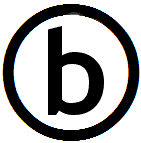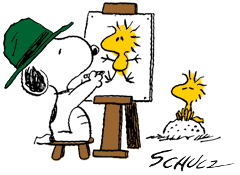
benjaminlegrand|ART|

ever since taking fine arts survey in high school, i have found myself gravitating towards the arts. i found that my favorite artists are fernando botero and pablo picasso. in my years, i haven't been fully appreciative of the arts, however, that has completely changed. college has encouraged me to appreciate the arts and understand that art and science go hand-in-hand. art can be found all throughout science. nature and its patterns and the human body are all works of art. everyone must come to understand the power of art. art is a powerful tool that sparks creativity and the imagination. art stimulates emotions. without art, every one would be cold and insensitive. art opens the door to a flood of emotions. art must be taught to every single person regardless of artistic ability.
my|artists|
pablo| picasso|
 everyone wants to understand art. why don?t we try to understand the song of a bird? why do we love the night, the flowers, everything around us, without trying to understand them? but in the case of a painting, people think they have to understand. if only they would realize above all that an artist works of necessity, that he himself is only an insignificant part of the world, and that no more importance should be attached to him than to plenty of other things which please us in the world, though we can?t explain them people who try to explain pictures are usually barking up the wrong tree.? picasso
everyone wants to understand art. why don?t we try to understand the song of a bird? why do we love the night, the flowers, everything around us, without trying to understand them? but in the case of a painting, people think they have to understand. if only they would realize above all that an artist works of necessity, that he himself is only an insignificant part of the world, and that no more importance should be attached to him than to plenty of other things which please us in the world, though we can?t explain them people who try to explain pictures are usually barking up the wrong tree.? picassopablo ruiz y picasso was a spanish painter and sculptor, generally considered the greatest artist of the 20th century. he was unique as an inventor of forms, as an innovator of styles and techniques, as a master of various media, and as one of the most prolific artists in history. he created more than 20,000 works. everyone knows his history.
joan|miró|
 "i make no distinction between painting and poetry...." the poetic paintings
of 20th century master joan miró (1893?1983) amuse, inspire and captivate audiences
worldwide.
"i make no distinction between painting and poetry...." the poetic paintings
of 20th century master joan miró (1893?1983) amuse, inspire and captivate audiences
worldwide. born in barcelona, spain, miro studied art at school of fine arts at la llotja and gali's escola d'art. his earliest works show the influence of the fauve and cubist movements which were fashionable in spain during the early part of the century. in 1920, miro traveled to paris and painted with surrealists andr, masson and max ernst. while frequently identified with the surrealist movement, miro never fully accepted the movement's creed and refused to sign the surrealist manifesto.
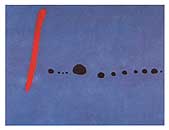 miro's vibrant canvases transport the viewer to alien worlds inhabited by all
manner of whimsical creatures. his work has been characterized as psychic automatism, an expression of the subconscious in free form. by 1930 miró had developed a lyrical style that remained fairly consistent. it is distinguished by the use of brilliant pure color and the playful juxtaposition of delicate lines with abstract, often amoebic shapes. throughout his life, miro felt a deep
connection to his catalan heritage and much of the symbolism that is so
prevalent in his work is deeply rooted in this bond.
miro's vibrant canvases transport the viewer to alien worlds inhabited by all
manner of whimsical creatures. his work has been characterized as psychic automatism, an expression of the subconscious in free form. by 1930 miró had developed a lyrical style that remained fairly consistent. it is distinguished by the use of brilliant pure color and the playful juxtaposition of delicate lines with abstract, often amoebic shapes. throughout his life, miro felt a deep
connection to his catalan heritage and much of the symbolism that is so
prevalent in his work is deeply rooted in this bond.
fernando|botero|
 fernando botero's satirical portraits of political, military and religious figures,
musicians and royalty are portrayed as rotund and motionless, taking on the
character of human still-life. humorous in nature at first glance, botero's paintings
are more often than not social commentary with political overtones.
fernando botero's satirical portraits of political, military and religious figures,
musicians and royalty are portrayed as rotund and motionless, taking on the
character of human still-life. humorous in nature at first glance, botero's paintings
are more often than not social commentary with political overtones.born in medellin, colombia, botero moved to bogota in 1951 and had his first international show at the leo matiz gal. leaving for madrid in 1952, he studied at the san fernando academy and, from 1953 until 1955, studied fresco technique and art history in florence which has influenced his painting ever since. returning to colombia, he exhibited at the biblioteca nacional in bogota and began teaching at the school of fine arts of the national university; the same year, he spent time in mexico studying the political murals of rivera and orozco, whose influence is evident in his political perspective.
 botero's visit to the united states in the late 1950s prompted a return to
live and work in new york for ten years beginning in 1960. although
abstract expressionism interested him, he sought his primary inspiration
from the italian renaissance. during this period he began to experiment
with creating volume in his paintings by expanding the figures and
compressing the space around them, a quality which he continues to
explore whether painting imaginary group portraits or parodies on the work
of famous masters.
botero's visit to the united states in the late 1950s prompted a return to
live and work in new york for ten years beginning in 1960. although
abstract expressionism interested him, he sought his primary inspiration
from the italian renaissance. during this period he began to experiment
with creating volume in his paintings by expanding the figures and
compressing the space around them, a quality which he continues to
explore whether painting imaginary group portraits or parodies on the work
of famous masters.
widely exhibited in europe and north and south america, botero has received numerous awards including the first intercol at the museum of modern art in bogota, and is included in major museums worldwide. since the early 1970s, botero has divided his time between paris, madrid and medellin.
dale|chihuly|
 dale chihuly (b. 1941) is an american artist renowned for his mastery of the ancient material of glass. his work is fresh, innovative, and distinctive combining european teamwork in the hotshop with a unique color sensibility and a profound understanding of the properties of molten glass.
dale chihuly (b. 1941) is an american artist renowned for his mastery of the ancient material of glass. his work is fresh, innovative, and distinctive combining european teamwork in the hotshop with a unique color sensibility and a profound understanding of the properties of molten glass. chihuly began his artistic pursuits with a bachelor's degree in interior design from the university of washington in seattle. an assignment to weave with non-textile material inspired him to weave glass and tile into a tapestry, thus beginning a life-long pursuit of artistic expression in glass. upon his 1965 graduation from the university of washington with a degree in interior design, chihuly began work as a designer for a seattle architectural firm, but concentrated on experiments and projects in stained glass, and began to blow glass on his own. in order to study glassblowing, in 1966 he abandoned his design career and worked as an commercial fisherman in alaska to earn money for graduate school. in 1967 he received his ms from the u. of wisconsin, and entered the mfa program at the rhode island school of design, where he is offered a teaching assistantship for glass courses.
chihuly graduated with his mfa degree and takes advantage of a fulbright fellowship to study glass at the venini glass factory on the island of murano, venice. he traveled from venice to germany and ireland, then back to the states where he embarked on a teaching and artistic career. throughout the following years he continued to travel, teach, learn and create works of glass art all over the world. in 1971 he developed the pilchuck glass school on a tree farm north of seattle with a $2000 grant from the union of independent colleges of art.
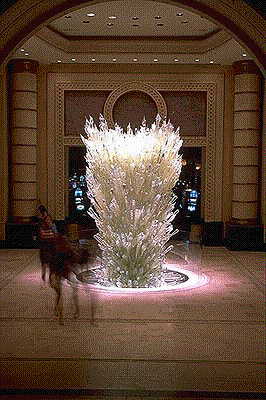
my|art|
as a visual artist, my designs and photography (standard, film and video) have allowed me to educate others on an assortment of issues/topics. i am currently developing a film (new media) project to educate on basic human rights.
for photography, i have been taking pictures of landscapes, buildings, or anything of beauty for approximately seven (7) years. the art of photography is the art of making memories. the camera catches little pieces of time for one and all to see. i have not entered my photos in competitions for my photos are like entries in a journal which serve as personal momentos of events in my life. not all of my photographs serve in a personal nature. my photography assignments are of somewhat of a different nature. they capture the spirit of an event in pictures supplemented by words.
my|portfolio|
photoalbums
france - switzerland - italy - tulane - nyu - new orleans - seattle - atlantaproduction pictures
comedy of errors - streamingfinland - swallowed by lipstick - something unspoken



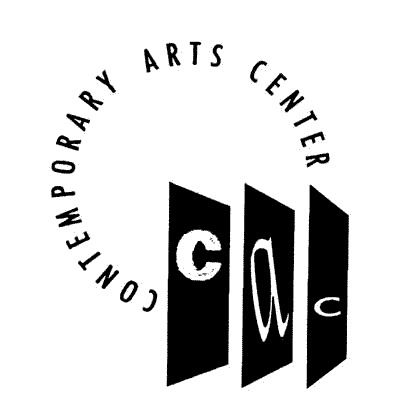
the contemporary arts center

updated: 14 septembre 2001.
©benjamin legrand. all rights reserved.
 [home]
[home]

